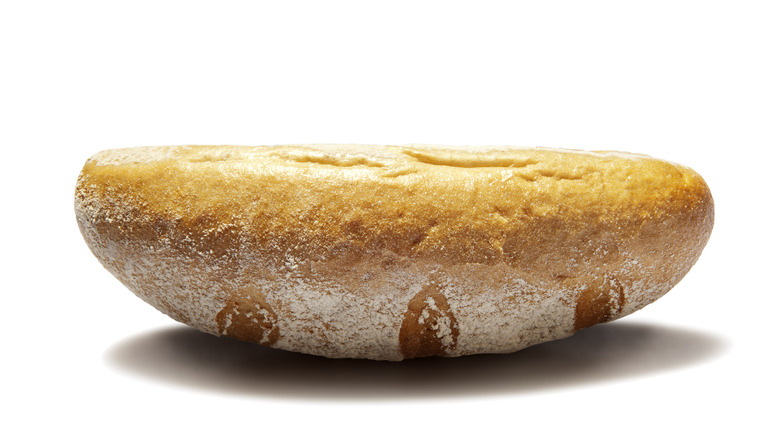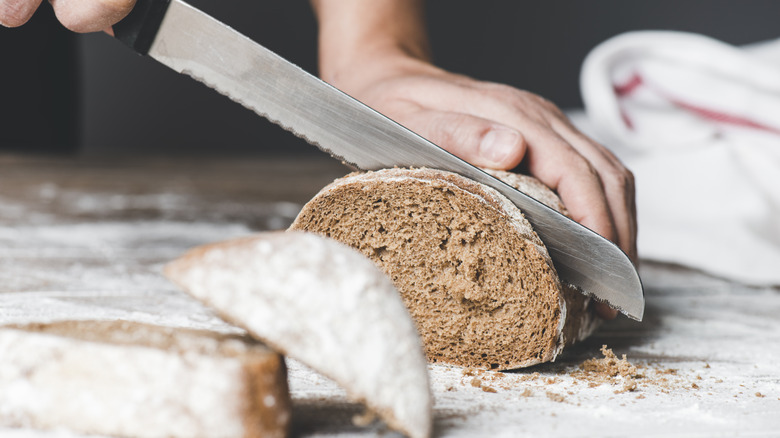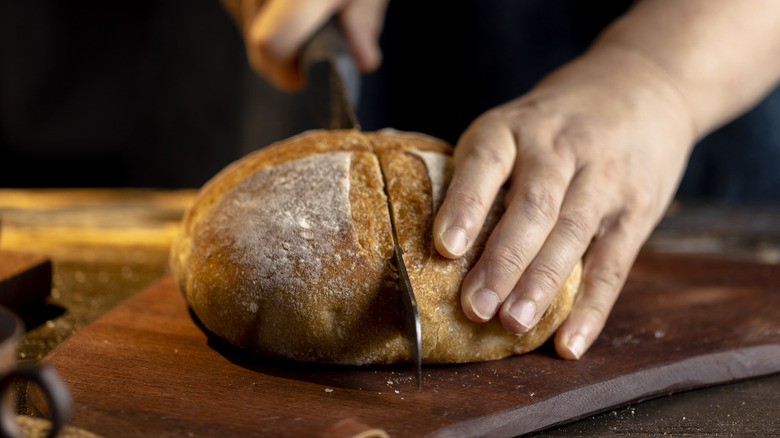Why You Should Always Slice Fresh Bread Upside Down
There are few things better than a loaf of freshly baked homemade bread. But, while there's really no wrong way to eat it, there is a wrong way to slice it. Because the last thing you want to do is ruin the beautiful loaf you just created (or bought).
Yet, that's exactly what we tend to do most of the time, as we take a knife to the resistant and often uneven upper crust and saw through it, putting too much pressure on the loaf and flattening it down in the process. However there's an easy solution to let you hold onto the beautiful rise you worked so hard for: Slice your bread upside down.
When you flip over the fresh loaf, you have an easier surface to cut through. If you start on the bottom where the bread is flatter, sturdier, and easier to work with, you'll find your knife can glide through the whole loaf, eventually slicing through the hard, crusty top while keeping its height and shape intact.
Qualities of a good bread knife
One of the most important factors in properly cutting through fresh bread, whether you flip it upside down or not, is the knife that you use. It's important to have a good, sharp utensil that will get the job done smoothly and safely. Not sure what makes a good bread knife? There are a few key things to look out for when choosing yours.
All bread knives are serrated, a name for those jagged edges; this is what allows for an easier sawing motion and sharp, clean cut. But a double-serrated knife is truly the way to go for slicing bread. When it comes to the actual serrations, the deeper and fewer the better. Deep and pointy edges mean more teeth surface and better grip, and the fewer there are, the more force and the deeper cut you'll get.
Also, look for a handle with a non-slip grip and one that you can firmly and comfortably wrap your hand around to give you more control. And as far as the blade, whenever possible go for full tang — that means that the metal extends all the way through to the bottom of the handle, offering the most stability and durability.
More tips for slicing fresh bread
The upside-down trick isn't the only hack out there for slicing through fresh bread, whether it's a delicate loaf or a tough and crusty one. First, a sturdy and even surface is important to make sure your bread (or cutting board) doesn't slide or slip around, so make sure you have a non-slip setup and that your cutting board is well secured.
Once you're ready to slice the loaf, saw downwards through the bread in an even back-and-forth motion, almost like you'd saw through a tree. But the key here is that less is more: Don't put too much pressure or force into the slicing; the blade will do the work.
For different loaves, particular strategies will help smooth out the process. For example, if you have a large, round, crusty loaf, you can cut it in half first and then stand it on the flattened end for more control. Or if you're cutting into something like a baguette, try slicing at a slight angle (with your knife positioned at around 45 degrees) rather than straight down to help reduce the risk of the knife slipping.



